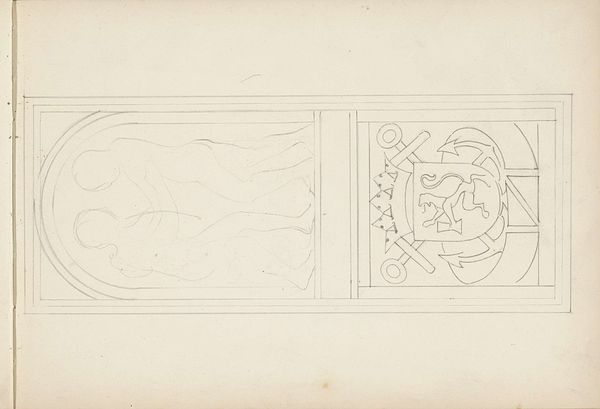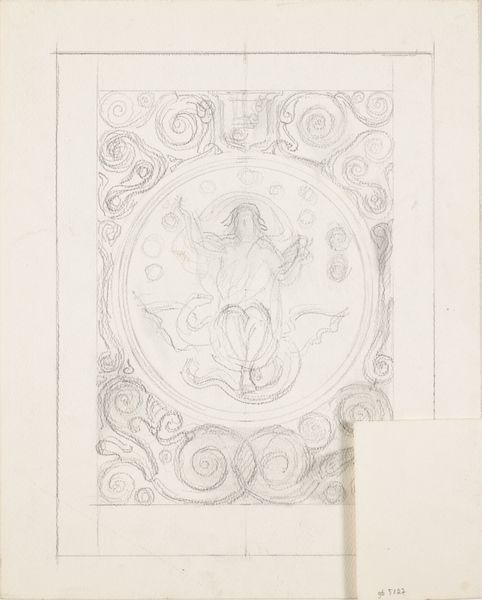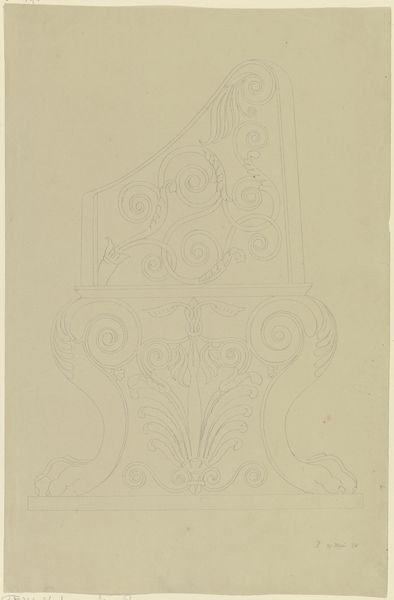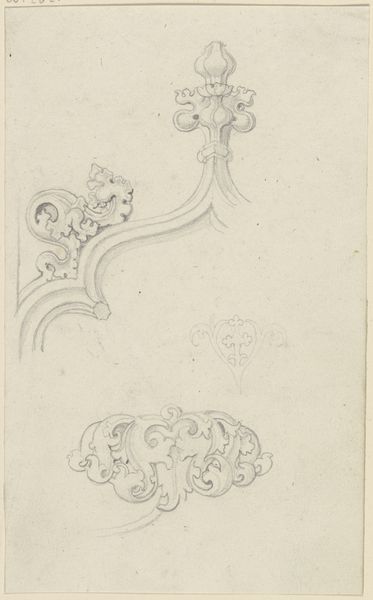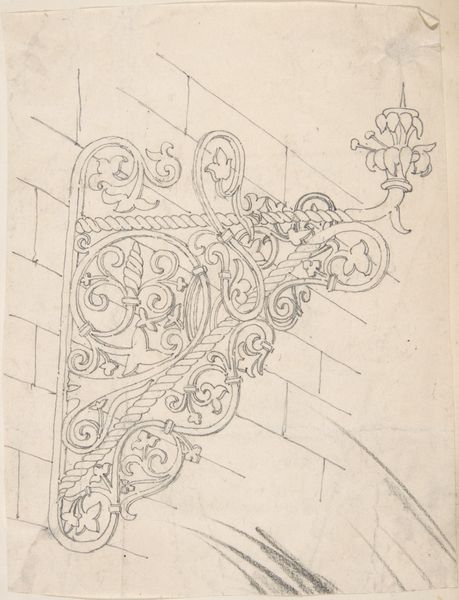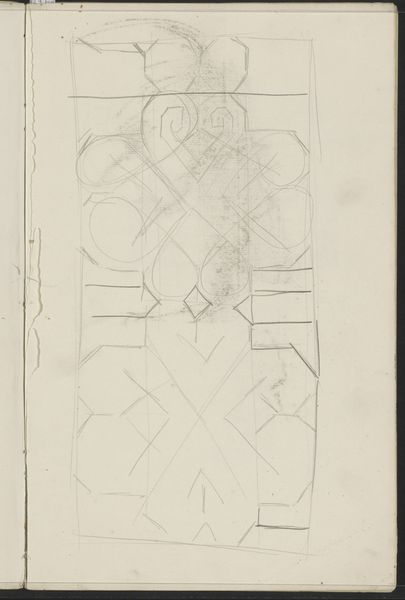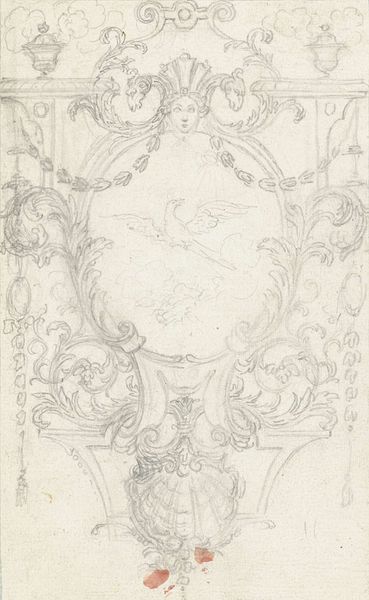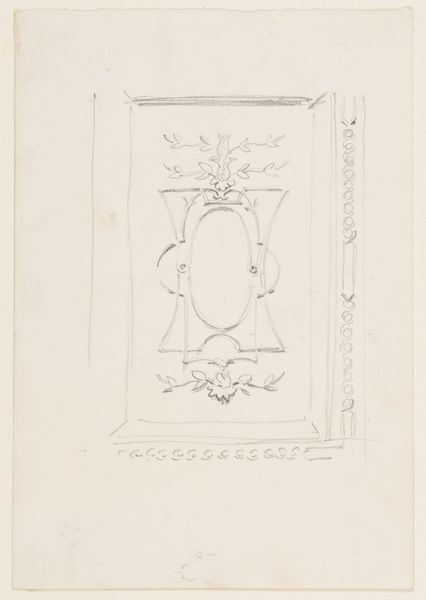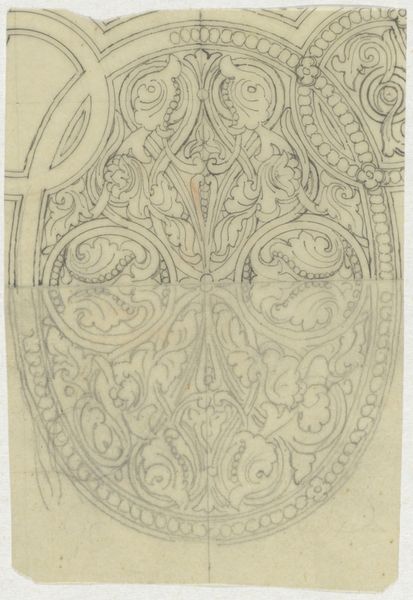
drawing, ornament, pencil
#
drawing
#
ornament
#
art-nouveau
#
linocut
#
pen sketch
#
etching
#
linocut print
#
geometric
#
pencil
#
abstraction
#
line
Copyright: Rijks Museum: Open Domain
Editor: Here we have Reijer Stolk's "Ornament met floraal motief" from around 1916, a drawing employing both pencil and pen. It feels quite delicate to me. What stands out to you when you look at it? Curator: What interests me most are the very visible construction lines, the grid, and the layers of sketches underneath the design itself. The artist is not trying to hide the process; rather, the labor becomes part of the art itself. Do you see how the imperfections add to its appeal? Editor: Yes, now that you point it out, the rough lines give it a very different feeling than a clean, finished print. Almost industrial, maybe? Curator: Exactly! The artist's hand is ever-present. Think about the materials: pencil, pen, paper - readily available, inexpensive. This makes art accessible, challenging the notion of high art as something precious and unattainable. How do you think the choice of these specific materials contributes to the overall message? Editor: I guess it moves it away from being about just the design, and more about the act of creation itself. And if these designs were meant to be widely produced, say as wallpaper, it connects the drawing directly to manufacturing. Curator: Precisely. It elevates craft and labor to the level of art, blurring those traditional boundaries. The means of production, the very act of making, becomes the statement. Editor: That's fascinating. I never really considered the implications of the materials so directly. It completely reframes how I see the piece. Curator: And hopefully, makes you think about art in a new and expanded context! It's a good reminder that even "decorative" work involves labour, intention, and material conditions that are worth considering.
Comments
No comments
Be the first to comment and join the conversation on the ultimate creative platform.
